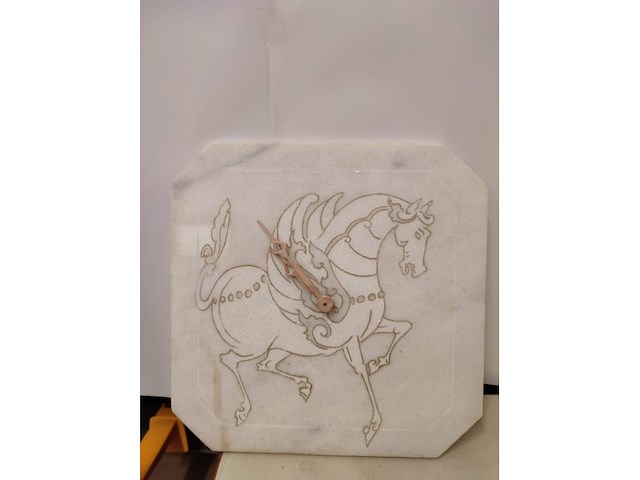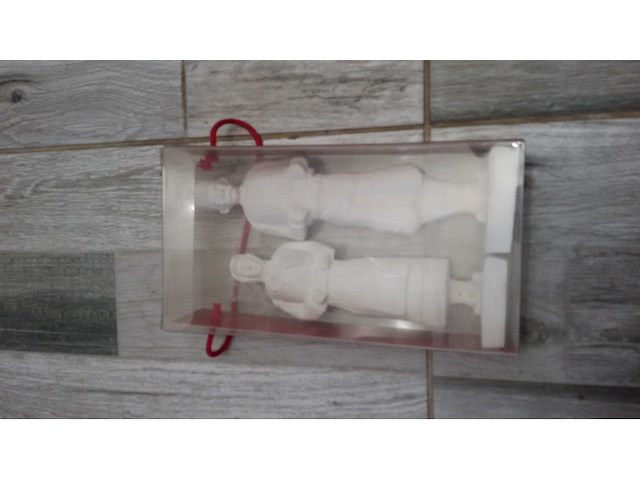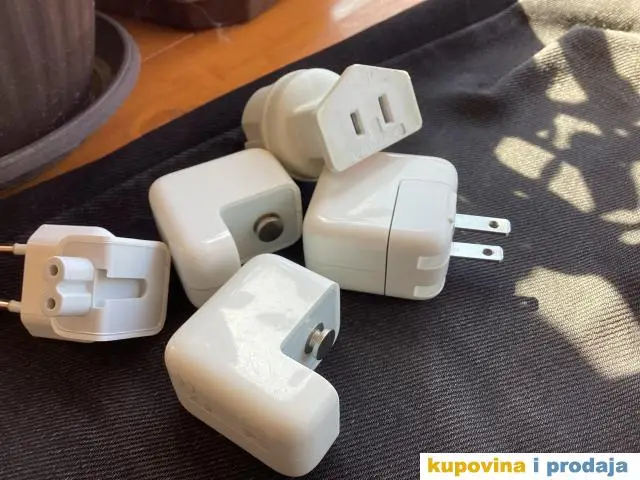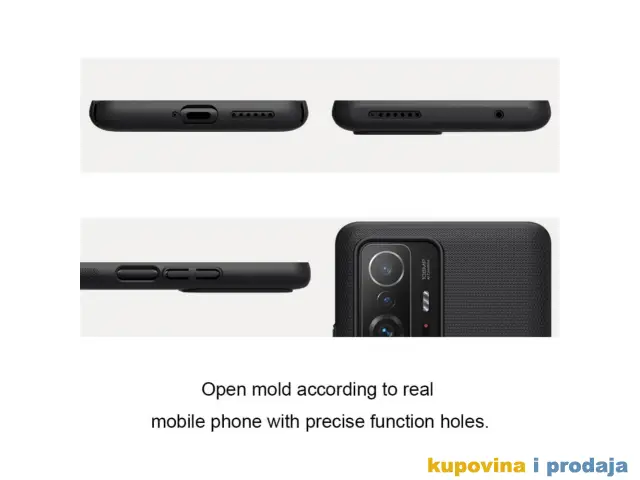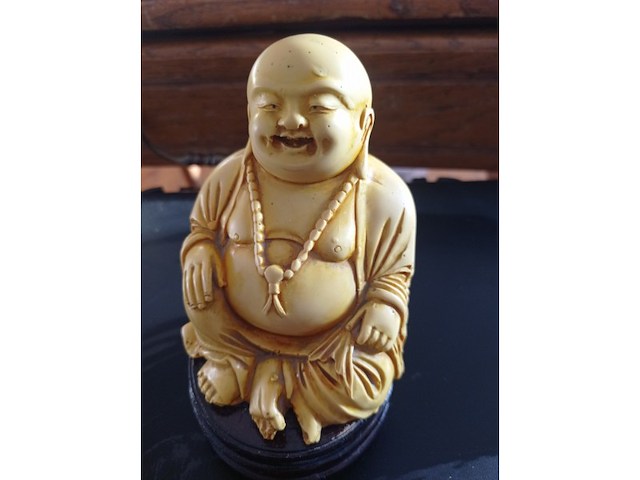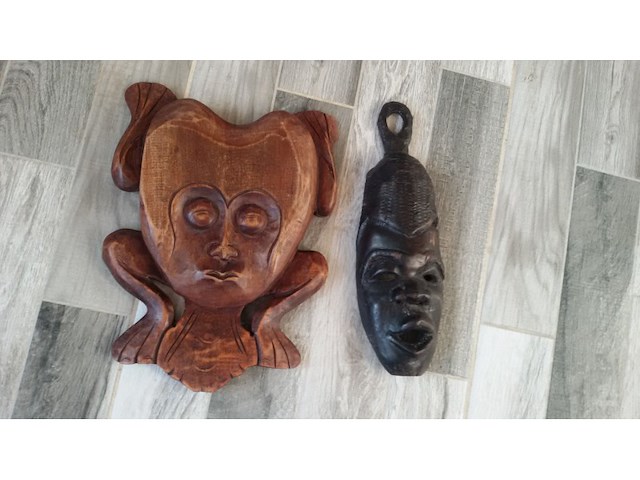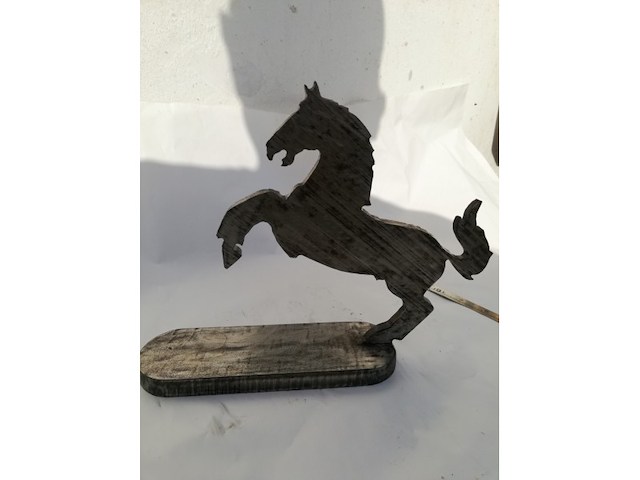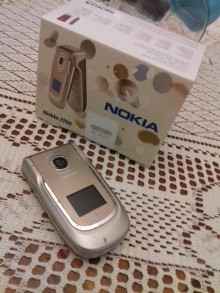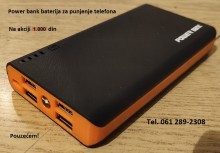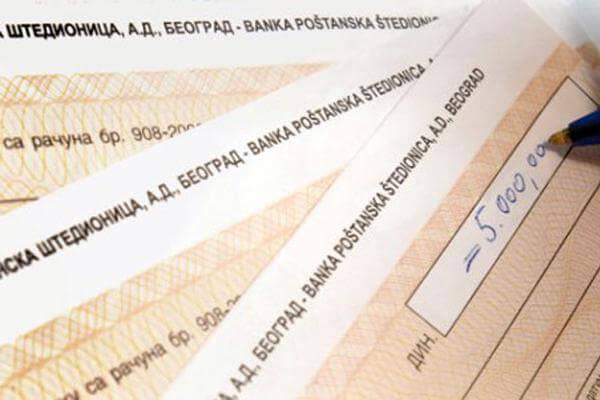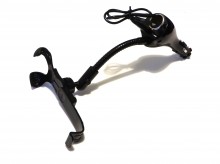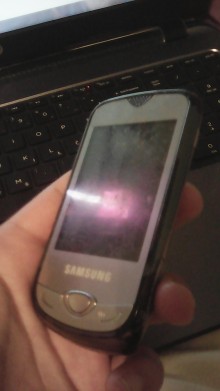Pratite promene cene putem maila
- Da bi dobijali obaveštenja o promeni cene potrebno je da kliknete Prati oglas dugme koje se nalazi na dnu svakog oglasa i unesete Vašu mail adresu.
1-25 od 2139 rezultata
Režim promene aktivan!
Upravo ste u režimu promene sačuvane pretrage za frazu .
Možete da promenite frazu ili filtere i sačuvate trenutno stanje
-
Tehnika chevron_right Telefoni i oprema
Oglas Prodajem originalne punjace za tablete od 1-8 bez kablova
-
Tehnika chevron_right Telefoni i oprema
Oglas Torbica Nillkin Scrub za Xiaomi 11T/11T Pro crna Zastitna futrola
-
Tehnika chevron_right Telefoni i oprema
Продајем мобилни телефон NOKIA 2760 на преклоп у исправном стању. Значи у функцији је и може даље да се користи. Уз телефон иду пуњач и слушалице, као и оригинална кутија и упутство за коришћење. За даље информације и договор звати на 065/661-3368 од 11hдо 19h.
piramida 1,5 x 1 x 1,1 cm bronza samo srbija ovaj predmet ne saljem u inostranstvo serbia only I do not send this item abroad Prošle izložbe (Muzej Africke umetnosti) 16. februar 2011. - 20. avgust 2011. AUTOR IZLOŽBE I KATALOGA Marija Ličina, kustos MAU Na izložbi je prikazano više od 500 tegova za merenje zlatnog praha iz zbirke Muzeja afričke umetnosti, preko 200 tegova iz zbirke Slovenskog etnografskog muzeja u Ljubljani, primeri iz privatnih kolekcija. Pored tegova, izložba uključuje i prateće predmete kao što su vage, kutije i kašike za zlatni prah. Tegovi naroda Akan jedinstveni su u svetu po svojim oblicima - predstavljaju ljude (ratnike, vračeve, lovce...), životinje (ptice,krokodili, antilope...), biljke (kikiriki, cvetove palmi, patlidžane...), predmete (bubnjeve, sandale, topove...), i brojne druge figurativne i geometrijske motive. Koliko privlače svojim oblicima, kao umetničke forme u bronzi, dimenzija od tek nekoliko santimentara, akanski tegovi jednako su značajni kao svedočanstva o prirodnom bogatstvu zlata u Zapadnoj Africi. Njima je meren zlatni prah, koji je imao ulogu novca u Gani i Obali Slonovače kod naroda Akan od 15. sve do kraja 19. veka, u svakodnevnim aktivnostima - na tržnicama, u kraljevskim trezorima zlata i za naplate državnih taksi i poreza. Izložba „Tegovi za merenje zlatnog praha naroda Akan“, autorke Marije Ličine, predstavila je značaj koji su u globalnoj istoriji imali bogata nalazišta zlata, trgovinski i kulturni kontakti na prostoru Zapadne Afrike. Kroz izložbu, posetioci uče o prometu zlata od afričke obale Mediterana do Gvinejskog zaliva (u periodu od 10. do 19. veka), pustinjskim karavanima i evropskim flotama u pohodu ka akanskim zlatonosnim poljima, o običajima cenkanja do „poslednjeg zrna zlata“, boji plamena za tegove-skulpture u bronzi i drugim temama vezanim za istoriju i kulturu naroda Akan. Izuzetnost zbirke tegova Muzeja afričke umetnosti u Beogradu, sa više od 500 originalnih predmeta, kao i zbirka Slovenskog etnografskog muzeja sa više od 200 tegova koji su po prvi put biti predstavljeni javnosti, poslužili su kao polazište za obradu nekoliko temata: AFRIČKO ZLATO U STAROM SVETU transsaharska trgovina zlatom, od 10. do 16. veka ZLATNI PRAH KAO NOVAC I JEDINICE TEŽINE: proizvodnja i promet zlata u „zlatnim kraljevstvima“ Gane, od 15. do 19. veka; kulturni kontakti i razmena između afričkih, arapskih i evropskih civilizacija AMBLEMI TRADICIJE I DRUŠTVENIH VREDNOSTI motivi tegova kao ilustracije poslovica i izreka POUKE NA TEGOVIMA ZA MERENJE ZLATNOG PRAHA Kao i oblici, i značenja koja su tegovi-skulpture imali različita su: mnogi asociraju mudre pouke iz poslovica i narodnih priča, čuvaju sećanja na bitke, mitove i legende, ili predstavljaju određene simbole. Navodimo neke od akanskih poslovica: Lud je onaj ko puši i nosi bačvu sa barutom na glavi! Između ključa i brave, jedan je stariji - mora postojati vođa, čak i među jednakima. Ne treba ti veliki štap da slomiješ petlu vrat - kaže se za moćnog čoveka koji nepotrebno zlostavlja siromašnog i nezaštićenog. Snaga palmovog drveta je u njegovim granama - kraljeva moć leži u broju njegovih podanika. ---- ovaj teg nije bio na izlozbi u MAU ----- ---------------------------------------- Akan goldweights, (locally known as mrammou), are weights made of brass used as a measuring system by the Akan people of West Africa, particularly for wei and fair-trade arrangements with one another. The status of a man increased significantly if he owned a complete set of weights. Complete small sets of weights were gifts to newly wedded men. This insured that he would be able to enter the merchant trade respectably and successfully. Beyond their practical application, the weights are miniature representations of West African culture items such as adinkra symbols, plants, animals and people. Stylistic studies of goldweights can provide relative dates into the two broad early and late periods. The Early period is thought to have been from about 1400–1720 AD, with some overlap with the Late period, 1700-1900 AD. There is a distinct difference between the Early and Late periods. Geometric weights are the oldest forms, dating from 1400 AD onwards while figurative weights, those made in the image of people, animals, building etc., first appear around 1600 AD. Radiocarbon dating, a standard and accurate method in many disciplines, cannot be used to date the weights, as it is an inorganic material. The base components of inorganic materials, such as metals, formed long before the manufacturing of the artifact.The copper and zinc used to make the alloy are exponentially older than the artifact itself. Studies on the quality or origins of the base metals in brass are not very useful due to the broad distribution and recycling of the material. Studying the weight`s cultural background or provenance is an accurate method of dating the weights. Historical records accompanying the weight describing the people to whom it belonged to, as well as a comparative study of the weights and oral and artistic traditions of neighbouring communities should be part of studying the background and provenance of the weights. Scholars use the weights, and the oral traditions behind the weights, to understand aspects of Akan culture that otherwise may have been lost. The weights represent stories, riddles, and code of conducts that helped guide Akan peoples in the ways they live their lives. Central to Akan culture is the concern for equality and justice; it is rich in oral histories on this subject. Many weights symbolize significant and well-known stories. The weights were part of the Akan`s cultural reinforcement, expressing personal behaviour codes, beliefs, and values in a medium that was assembled by many people. Anthony Appiah describes[2] how his mother, who collected goldweights, was visited by Muslim Hausa traders from the north. The goldweights they brought were `sold by people who had no use for them any more, now that paper and coin had replaced gold-dust as currency. And as she collected them, she heard more and more of the folklore that went with them; the proverbs that every figurative gold-weight elicited; the folk-tales, Ananseasem, that the proverbs evoked.` Appiah also heard these Ananseasem, Anansi stories, from his father, and writes: `Between his stories and the cultural messages that came with the gold-weights, we gathered the sort of sense of a cultural tradition that comes from growing up in it. For us it was not Asante tradition but the webwork of our lives.` There are a number of parallels between Akan goldweights and the seals used in Harappa. Both artifacts stabilized and secured regional and local trade between peoples, while they took on further meaning beyond their practical uses. Shields are symbols of bravery, stamina, or a glorious deed, though not necessarily in battle. Double-edged swords symbolize a joint rule between female and male, rather than implying violence or rule with fear. The naming of the weights is incredibly complex, as a complete list of Akan weights had more than sixty values, and each set had a local name that varied regionally. There are, from studies done by Garrard, twelve weight-name lists from Ghana and the Ivory Coast. Some estimate that there are 3 million goldweights in existence. Simon Fraser University has a small collection, consisting mostly of geometric style weights, with a number of human figurative weights. Both types are pictured here and come from the SFU Museum of Archaeology and Ethnography. Many of the largest museums of in the US and Europe have sizable collections of goldweights. The National Museum of Ghana, the Musée des Civilisations de Côte d`Ivoire in Abidjan, Derby Museum and smaller museums in Mali all have collections of weights with a range of dates. Private collections have amassed a wide range of weights as well. In the past, each weight was meticulously carved, then cast using the ancient technique of lost wax. As the Akan culture moved away from using gold as the basis of their economy, the weights lost their cultural day-to-day use and some of their significance. Their popularity with tourists has created a market that the locals fill with mass-produced weights. These modern reproductions of the weights have become a tourist favorite. Rather than the simple but artistic facial features of the anthropomorphic weights or the clean, smooth lines of the geomorphic weights, modern weights are unrefined and mass-produced look. The strong oral tradition of the Akan is not included in the creation of the weights; however, this does not seem to lessen their popularity. The skill involved in casting weights was enormous; as most weights were less than 2½ ounces and their exact mass was meticulously measured. They were a standard of measure to be used in trade, and had to be accurate. The goldsmith, or adwumfo, would make adjustments if the casting weighed too much or too little. Even the most beautiful, figurative weights had limbs and horns removed, or edges filed down until it met the closest weight equivalent. Weights that were not heavy enough would have small lead rings or glass beads attached to bring up the weight to the desired standard. There are far more weights without modifications than not, speaking to the talent of the goldsmiths. Most weights were within 3% of their theoretical value; this variance is similar to those of European nest weights from the same time. Early weights display bold, but simple, artistic designs. Later weights developed into beautiful works of art with fine details. However, by the 1890s (Late Period) the quality of both design and material was very poor, and the abandonment of the weights quickly followed. Tim Garrard (April 28, 1943 – May 17, 2007) studied the Akan gold culture. His research was centered on goldweights and their cultural significances and purposes. He was also interested in the gold trade, the creation of the weight measurements, and how Akan trade networks operated with other networks. His works and those that use his work as a base are very informative about broader Akan culture. The weights pictured here are part of the collection at the SFU museum. Donated to the museum in the late 1970s, they are part of a wide collection of African cultural pieces.
1,2 x 1,2 x 0.5 cm bronza samo srbija ovaj predmet ne saljem u inostranstvo serbia only I do not send this item abroad Prošle izložbe (Muzej Africke umetnosti) 16. februar 2011. - 20. avgust 2011. AUTOR IZLOŽBE I KATALOGA Marija Ličina, kustos MAU Na izložbi je prikazano više od 500 tegova za merenje zlatnog praha iz zbirke Muzeja afričke umetnosti, preko 200 tegova iz zbirke Slovenskog etnografskog muzeja u Ljubljani, primeri iz privatnih kolekcija. Pored tegova, izložba uključuje i prateće predmete kao što su vage, kutije i kašike za zlatni prah. Tegovi naroda Akan jedinstveni su u svetu po svojim oblicima - predstavljaju ljude (ratnike, vračeve, lovce...), životinje (ptice,krokodili, antilope...), biljke (kikiriki, cvetove palmi, patlidžane...), predmete (bubnjeve, sandale, topove...), i brojne druge figurativne i geometrijske motive. Koliko privlače svojim oblicima, kao umetničke forme u bronzi, dimenzija od tek nekoliko santimentara, akanski tegovi jednako su značajni kao svedočanstva o prirodnom bogatstvu zlata u Zapadnoj Africi. Njima je meren zlatni prah, koji je imao ulogu novca u Gani i Obali Slonovače kod naroda Akan od 15. sve do kraja 19. veka, u svakodnevnim aktivnostima - na tržnicama, u kraljevskim trezorima zlata i za naplate državnih taksi i poreza. Izložba „Tegovi za merenje zlatnog praha naroda Akan“, autorke Marije Ličine, predstavila je značaj koji su u globalnoj istoriji imali bogata nalazišta zlata, trgovinski i kulturni kontakti na prostoru Zapadne Afrike. Kroz izložbu, posetioci uče o prometu zlata od afričke obale Mediterana do Gvinejskog zaliva (u periodu od 10. do 19. veka), pustinjskim karavanima i evropskim flotama u pohodu ka akanskim zlatonosnim poljima, o običajima cenkanja do „poslednjeg zrna zlata“, boji plamena za tegove-skulpture u bronzi i drugim temama vezanim za istoriju i kulturu naroda Akan. Izuzetnost zbirke tegova Muzeja afričke umetnosti u Beogradu, sa više od 500 originalnih predmeta, kao i zbirka Slovenskog etnografskog muzeja sa više od 200 tegova koji su po prvi put biti predstavljeni javnosti, poslužili su kao polazište za obradu nekoliko temata: AFRIČKO ZLATO U STAROM SVETU transsaharska trgovina zlatom, od 10. do 16. veka ZLATNI PRAH KAO NOVAC I JEDINICE TEŽINE: proizvodnja i promet zlata u „zlatnim kraljevstvima“ Gane, od 15. do 19. veka; kulturni kontakti i razmena između afričkih, arapskih i evropskih civilizacija AMBLEMI TRADICIJE I DRUŠTVENIH VREDNOSTI motivi tegova kao ilustracije poslovica i izreka POUKE NA TEGOVIMA ZA MERENJE ZLATNOG PRAHA Kao i oblici, i značenja koja su tegovi-skulpture imali različita su: mnogi asociraju mudre pouke iz poslovica i narodnih priča, čuvaju sećanja na bitke, mitove i legende, ili predstavljaju određene simbole. Navodimo neke od akanskih poslovica: Lud je onaj ko puši i nosi bačvu sa barutom na glavi! Između ključa i brave, jedan je stariji - mora postojati vođa, čak i među jednakima. Ne treba ti veliki štap da slomiješ petlu vrat - kaže se za moćnog čoveka koji nepotrebno zlostavlja siromašnog i nezaštićenog. Snaga palmovog drveta je u njegovim granama - kraljeva moć leži u broju njegovih podanika. ---- ovaj teg nije bio na izlozbi u MAU ----- ---------------------------------------- Akan goldweights, (locally known as mrammou), are weights made of brass used as a measuring system by the Akan people of West Africa, particularly for wei and fair-trade arrangements with one another. The status of a man increased significantly if he owned a complete set of weights. Complete small sets of weights were gifts to newly wedded men. This insured that he would be able to enter the merchant trade respectably and successfully. Beyond their practical application, the weights are miniature representations of West African culture items such as adinkra symbols, plants, animals and people. Stylistic studies of goldweights can provide relative dates into the two broad early and late periods. The Early period is thought to have been from about 1400–1720 AD, with some overlap with the Late period, 1700-1900 AD. There is a distinct difference between the Early and Late periods. Geometric weights are the oldest forms, dating from 1400 AD onwards while figurative weights, those made in the image of people, animals, building etc., first appear around 1600 AD. Radiocarbon dating, a standard and accurate method in many disciplines, cannot be used to date the weights, as it is an inorganic material. The base components of inorganic materials, such as metals, formed long before the manufacturing of the artifact.The copper and zinc used to make the alloy are exponentially older than the artifact itself. Studies on the quality or origins of the base metals in brass are not very useful due to the broad distribution and recycling of the material. Studying the weight`s cultural background or provenance is an accurate method of dating the weights. Historical records accompanying the weight describing the people to whom it belonged to, as well as a comparative study of the weights and oral and artistic traditions of neighbouring communities should be part of studying the background and provenance of the weights. Scholars use the weights, and the oral traditions behind the weights, to understand aspects of Akan culture that otherwise may have been lost. The weights represent stories, riddles, and code of conducts that helped guide Akan peoples in the ways they live their lives. Central to Akan culture is the concern for equality and justice; it is rich in oral histories on this subject. Many weights symbolize significant and well-known stories. The weights were part of the Akan`s cultural reinforcement, expressing personal behaviour codes, beliefs, and values in a medium that was assembled by many people. Anthony Appiah describes[2] how his mother, who collected goldweights, was visited by Muslim Hausa traders from the north. The goldweights they brought were `sold by people who had no use for them any more, now that paper and coin had replaced gold-dust as currency. And as she collected them, she heard more and more of the folklore that went with them; the proverbs that every figurative gold-weight elicited; the folk-tales, Ananseasem, that the proverbs evoked.` Appiah also heard these Ananseasem, Anansi stories, from his father, and writes: `Between his stories and the cultural messages that came with the gold-weights, we gathered the sort of sense of a cultural tradition that comes from growing up in it. For us it was not Asante tradition but the webwork of our lives.` There are a number of parallels between Akan goldweights and the seals used in Harappa. Both artifacts stabilized and secured regional and local trade between peoples, while they took on further meaning beyond their practical uses. Shields are symbols of bravery, stamina, or a glorious deed, though not necessarily in battle. Double-edged swords symbolize a joint rule between female and male, rather than implying violence or rule with fear. The naming of the weights is incredibly complex, as a complete list of Akan weights had more than sixty values, and each set had a local name that varied regionally. There are, from studies done by Garrard, twelve weight-name lists from Ghana and the Ivory Coast. Some estimate that there are 3 million goldweights in existence. Simon Fraser University has a small collection, consisting mostly of geometric style weights, with a number of human figurative weights. Both types are pictured here and come from the SFU Museum of Archaeology and Ethnography. Many of the largest museums of in the US and Europe have sizable collections of goldweights. The National Museum of Ghana, the Musée des Civilisations de Côte d`Ivoire in Abidjan, Derby Museum and smaller museums in Mali all have collections of weights with a range of dates. Private collections have amassed a wide range of weights as well. In the past, each weight was meticulously carved, then cast using the ancient technique of lost wax. As the Akan culture moved away from using gold as the basis of their economy, the weights lost their cultural day-to-day use and some of their significance. Their popularity with tourists has created a market that the locals fill with mass-produced weights. These modern reproductions of the weights have become a tourist favorite. Rather than the simple but artistic facial features of the anthropomorphic weights or the clean, smooth lines of the geomorphic weights, modern weights are unrefined and mass-produced look. The strong oral tradition of the Akan is not included in the creation of the weights; however, this does not seem to lessen their popularity. The skill involved in casting weights was enormous; as most weights were less than 2½ ounces and their exact mass was meticulously measured. They were a standard of measure to be used in trade, and had to be accurate. The goldsmith, or adwumfo, would make adjustments if the casting weighed too much or too little. Even the most beautiful, figurative weights had limbs and horns removed, or edges filed down until it met the closest weight equivalent. Weights that were not heavy enough would have small lead rings or glass beads attached to bring up the weight to the desired standard. There are far more weights without modifications than not, speaking to the talent of the goldsmiths. Most weights were within 3% of their theoretical value; this variance is similar to those of European nest weights from the same time. Early weights display bold, but simple, artistic designs. Later weights developed into beautiful works of art with fine details. However, by the 1890s (Late Period) the quality of both design and material was very poor, and the abandonment of the weights quickly followed. Tim Garrard (April 28, 1943 – May 17, 2007) studied the Akan gold culture. His research was centered on goldweights and their cultural significances and purposes. He was also interested in the gold trade, the creation of the weight measurements, and how Akan trade networks operated with other networks. His works and those that use his work as a base are very informative about broader Akan culture. The weights pictured here are part of the collection at the SFU museum. Donated to the museum in the late 1970s, they are part of a wide collection of African cultural pieces.
-
Tehnika chevron_right Telefoni i oprema
Power bank baterija za punjenje mobilnih telefona u pokretu, LED baterija 4 USB porta. Napravljen je od dobrog materijala, otporan je na habanje i izdržljiv. Mogu se postaviti 6 kom 18650 litijumskih baterija. Ima zaštitu od prekomernog pražnjenja, zaštitu od prenapona, zaštitu od kratkog spoja i zaštitu od resetovanja! Ima 4 USB izlaza za punjenje mobilnih telefona, MP3, MP4, tableta itd. Izlaz 5V / 2A, podržava režim brzog punjenja. Sa LED baterijskom lampom za osvetljenje u slučaju nužde. Jednostavan i prikladan dizajn. Savršen za upotrebu na otvorenom. Specifikacije: Ulaz: 5V 2A Izlaz: 5V 2A Baterija: 6k 18650 (nije uključena) Veličina: 22 * 77 * 152mm Boja: Crnonarandžasta. Cena 1.ooo din. Slanje pouzećem. Porudžbine na tel.061 289-2308.
-
Tehnika chevron_right Telefoni i oprema
Text Oglasa Prodavac prihvata svu odgovrnost za ovaj predmet oglasavanja. IN predmet broj: 51021 Gde unovciti domaci cek Beograd – 064 244 7999 Unovcavanje cekova Beograd – 064 2447999 Provizije u zavisnosti od broja dana za koliko se ček pušta: 0 dana – 6%, 30 dana – 10%, 60 dana – 14%, 90 dana – 18%, 120 dana – 22%, 150 dana – 26%, Unovčavanje čekova gradajana i provizije u zavisnosti od broja rata: 3 rate – 10% 4 rate – 12% Unovcavanje cekova Beograd Brankov plato bb, Beograd 11000 064 2447999 Unovcavanje cekova u menjacnici, oglasi unovcavanje cekova, otkup cekova beograd, unovcavanje cekova gradjana, zalagonica beograd cekovi, gde unovciti domaci cek
-
Tehnika chevron_right Telefoni i oprema
Text Oglasa Prodavac prihvata svu odgovrnost za ovaj predmet oglasavanja. IN predmet broj: 50841 Unovcavam cekove Beograd – 064 244 7999 Unovčavanje čekova Beograd – 064 2447999 Provizije u zavisnosti od broja dana za koliko se ček pušta: 0 dana – 6%, 30 dana – 10%, 60 dana – 14%, 90 dana – 18%, 120 dana – 22%, 150 dana – 26%, Unovčavanje čekova gradajana i provizije u zavisnosti od broja rata: 3 rate – 10% 4 rate – 12% Unovcavanje cekova Beograd 064 2447999 Unovcavanje cekova u menjacnici, oglasi unovcavanje cekova, otkup cekova beograd, unovcavanje cekova gradjana, unovcavam cekove beograd, zalagonica beograd cekovi,
-
Tehnika chevron_right Telefoni i oprema
Univerzalni Auto Drzac za Mobilni, GPS, PDA, MP3, MP4, tablet i druge uredjaje. Poseduje USB kabl za punjenje. U horizontalnom polozaju bez problema drzi tablet od 7".
-
Tehnika chevron_right Telefoni i oprema
Kupite Vip super karticu i po ceni od 300 dinara možeš da kupiš 6000 Vip minuta 6000 SMS poruka ka svima 60 MB Kupljen sadržaj važi 30 dana u nacionalnom saobraćaju. Plus dobijate početnih 300 dinara kredita za kupovinu promocije. Brojevi su: 061 1435470 068 4285559 061 6119539 061 6102618 061 6102613 061 6102614 061 6109458 ----------------------------------- 061 2987423 - Prodat 061 1691165 - Prodat 061 2476885 - Prodat 061 1984554 - Prodat 061 6002344 - Prodat 061 6002338 - Prodat 061 6002337 - Prodat 061 6033274 - Prodat 061 2706604 - Prodat 061 2707747 - Prodat 061 6000122 - Prodat 061 6000344 - Prodat 061 1373978 - Prodat 061 1532380 - Prodat 061 2518776 - Prodat 061 6308004 - Prodat 061 2225870 - Prodat 061 6002330 - Prodat 061 2473992 - Prodat 061 2712511 - Prodat 061 2676682 - Prodat 061 1993844 - Prodat 061 1988990 - Prodat 061 1667444 - Prodat 061 2987465 - Prodat 061 1373971 - Prodat 061 1373950 - Prodat 061 1416266 - Prodat 061 1373984 - Prodat 061 1705100 - Prodat 061 1975777 - Prodat 061 3133813 - Prodat 061 2530377 - Prodat 061 2530399 - Prodat 061 1532381 - Prodat 061 1416266 - Prodat 061 1419912 - Prodat 061 1419984 - Prodat 061 1416422 - Prodat 061 1681399 - Prodat 061 1681400 - Prodat 061 1416447 - Prodat 061 3037244 - Prodat 061 3037252 - Prodat 061 3037245 - Prodat 061 3037256 - Prodat 061 2929422 - Prodat 061 2933379 - Prodat 061 1464860 - Prodat 061 3248719 - Prodat 061 2944023 - Prodat 061 2890756 - Prodat 061 2933381 - Prodat 061 2933378 - Prodat 061 2995231 - Prodat 061 3067378 - Prodat 061 3060628 - Prodat 061 2934586 - Prodat 061 2934569 - Prodat 061 2934587 - Prodat 061 2995262 - Prodat 061 3067369 - Prodat 061 2995232 - Prodat 061 3060672 - Prodat 061 3060658 - Prodat 061 2934568 - Prodat 061 3060674 - Prodat 061 3060696 - Prodat 061 3060684 - Prodat 061 3060698 - Prodat 061 3060631 - Prodat 061 3060649 - Prodat 061 3067364 - Prodat 061 2995271 - Prodat 061 3060695 - Prodat 061 2934562 - Prodat 061 3060702 - Prodat 061 1464765 - Prodat 061 1464766 - Prodat 061 1406003 - Prodat 061 1406004 - Prodat 061 1464804 - Prodat 061 1464805 - Prodat 061 1464876 - Prodat 061 1464877 - Prodat 061 1464878 - Prodat 061 1464879 - Prodat 061 1622089 - Prodat 061 1622090 - Prodat Kontakt: 061 143 0000 Web: www.mobilni-brojevi.com
-
Tehnika chevron_right Telefoni i oprema
Ekstra telefoncic bez mana full ispravan sa sitnim tragovima koriscenja,,Na sve mreze..
